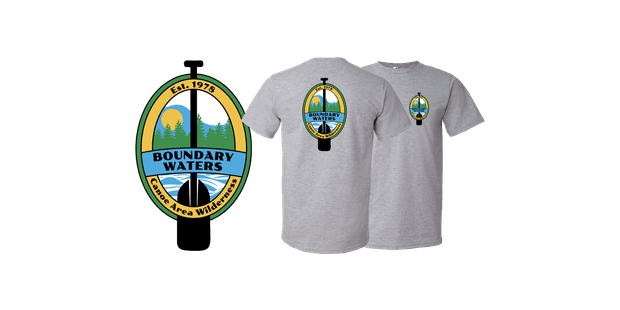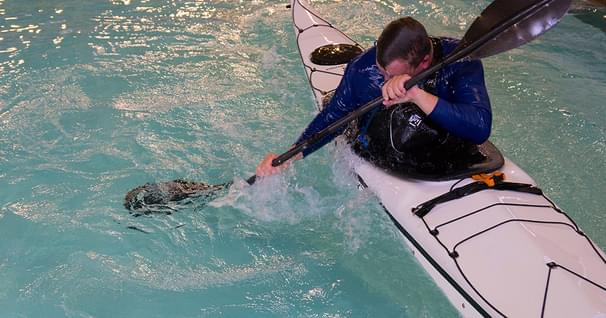Basic Canoe Safety
You'll be happy to hear that canoeing is one of the safest outdoor activities that you can do. Nonetheless, there's still some basic principles to ensure you stay safe.
Stretching
As with any other sport, one of the best things you can do to stay healthy on and off the water is to take a few minutes to do some simple upper and lower body stretches before and after hitting the water.
General Safety
Although flat water canoeing is generally a very safe activity, if things do end up taking a turn for the worst, being out on the water means that situations can become very serious very quickly. And so it's worth taking a moment to look at how to deal with some of these situations.
Avoiding dangerous situations is surprisingly easy. First and foremost, booze and paddling do not mix. Unfortunately, alcohol is responsible for too many boating-related accidents.
Secondly, wear a PFD whenever you're on the water, and paddling PFDs are the best because they're the most comfortable to wear while you're paddling.
Third, select an appropriate paddling spot. This means choosing one that is sheltered from wind and waves, has easily reached access spots, and has minimal motor boat traffic.
Lastly, dress for the conditions, and if you're paddling in cold water, be conservative with all your decisions.
~Get the BWCAW Tee~
With over 1,090,000 acres of wilderness area, the BWCAW is a paddler's paradise.
Dealing with Weather
Weather will always have a big bearing on whether or not you should go canoeing, and depending on where you're paddling, you'll have different weather hazards to deal with. For large bodies of water and on the ocean, the biggest weather concerns are wind and waves.
Avoiding getting caught out in nasty, windy, and wavy conditions is pretty easy. If you're going to be heading out into a big body of water, check the weather report beforehand and stay close to shore. Better yet, avoid the open water and stay in calm, protected areas.
Another real weather hazard is thunderstorms. If you hear thunder, you know that there's lightning around. When you're in the water, you're the highest point for quite a distance in any direction, which makes you a perfect lightning rod. When there's a thunderstorm nearby, the best thing to do is just get out of the water and wait for it to pass.
Boat Traffic
Although lakes are great places for canoes, there's a good chance that you'll be sharing them with power boats, sailboats, and jet skis. If that's the case, you're best staying close to the shore and out of the way. The biggest hazard will likely be the wave kicked up by power boats, and the best way to deal with these waves is to point your canoe directly into them.
River Currents Rivers are some of the best places to paddle. They're usually very sheltered from the wind and waves. They'll often provide shaded areas to escape from the sun on a hot day, and they're usually very accessible. Sometimes they even offer a little current to help push you downstream. Although current can be a welcome addition to a day trip, it also presents some new hazards that are usually very avoidable, but you have to understand them.
First off, it's important that you appreciate how much power moving water really has. Even a gentle current can easily overpower a full-grown adult. So if you plan to paddle in a section of river, you can't afford to be surprised if the riverbed drops or constricts, and the current picks up. Before putting on the water, make sure you know exactly what you're getting into.
Strainers
Although most people tend to fear rocks the most, fallen trees are one of the most dangerous things because they can create something called a strainer when they're stuck in current. They let the water through, but they stop everything else and can trap a canoe or swimmers under the water.
Low-Head Dams
Low-head dams and weirs are other river features that you absolutely must avoid. This is because they cause reversing currents called hydraulics, which rescue teams often refer to as drowning machines.
River Swimming
A last hazard to be aware of comes into play if you find yourself swimming in current. Although there's nothing wrong with taking a swim in gentle current, you need to appreciate the dangers of a foot entrapment. Riverbeds usually consist of a jumble of rocks and other debris, and if your foot were ever to fall into a crack or depression, the power of the river could push you over and hold you under water.
A simple way to avoid a foot entrapment is to resist the temptation to stand up and walk into shore when you're in current. You're better off to stay in the water and swim yourself right into shore before standing up.
Related Articles
As the days get shorter and the weather gets colder, it becomes harder to get out and paddle and easier…
Mention “pool session” and the first image that pops into most kayakers minds is a class in how to roll.…
Paddling alone is a recipe for danger. Bring a buddy and stay safe on the water.




